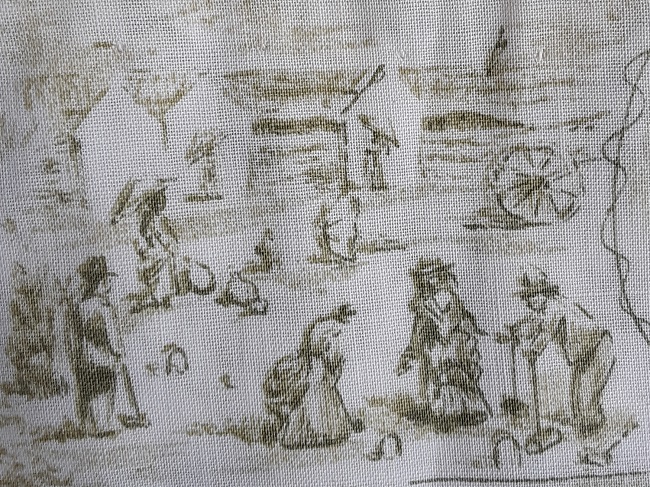
Besides presenting my own paper at the Southeastern Region Costume Society of America Symposium, I learned a lot from the other presenters and from the museum exhibitions at the Kentucky Museum where the symposium was held. Much of the content of the first day of the symposium was centered around some artifacts in the museum’s collection – clothing made by the dressmaking business of Mrs. A.H. (Carrie) Taylor. Located in Bowling Green, Kentucky, Mrs. Taylor’s was THE fashionable dressmaking establishment in town. In fact, it had clients from not only southwestern Kentucky, but also around the country.
So much of fashion history has been written through the famous designers. If you think of nineteenth century design, Monsieur Worth of Paris comes to mind. But by the 1870s when Carrie opened her business, fashion was still more of a local thing, with the town’s dressmakers reigning supreme. Not that Paris wasn’t important, it was. But fashion magazines and sewing patterns made it possible for women around the country to feel fashionable. This was especially true in a place like Bowling Green where the favored dressmaker, Mrs. Taylor, traveled yearly to Paris and to New York to see the latest styles and to purchase the latest fabrics and trims.
Carrie Burnam was born in Bowling Green in 1855. She attended the local college, and in 1878 after graduation opened a dressmaking business in her parent’s home. Even after she married and had children, the now Mrs. Taylor continued to work, expanding her business along with husband Aaron, to where at its height, they employed 300 women workers. Mrs. Taylor directed the business, advising her clients on the styles, colors, and trims for their new dresses. Trousseaux were a specialty.

What made the experience so great was that not only did Dr. Cox talk about the importance of Mrs. Taylor’s work, we also heard from the conservator, Colleen Callahan, who did a presentation on the work she performed in order to stabilize the garments and to make them safe for display. She had photos of the before, during, and after of the conservation process. And the icing on the cake was that Ms. Callahan was available in the exhibition, pointing out the conservation. It was an enlightening experience to see a gown go from shredded silk to display on a dressform.

This lovely silk gown was in sad condition. The bodice was very shattered, with the sleeves being thoroughly tattered. Colleen removed the off-white insets and replaced them with matching silk. Here was where having an extensive stash of old fabrics came in handy. The patterned silk was also splitting so conservation netting was used to encase the fabric, preventing any further fabric loss. The dress had been made with large facings so some of the fabric from them was used to fill in larger spaces that were missing fabric.

The skirt was in better condition, but there are a few spaces where action had to be taken. What is really amazing is that unless one knew where to look, the conservation would have totally escaped notice.

This stunning blue silk dress looks pristine at first look, but Colleen worked hours to stabilize the fabric, to rework the caps of the sleeves, and to replace shattered places with matching fabric. Fortunately, when the dress was donated to the museum it came with a length of the original fabric.


Best sleeves ever.


Glass cases can be annoying to people like me who want to take good photos to share, but having these encased meant that the visitors could see the dresses from every angle, and could get close up without risking touching the fragile textiles.


Not all the clothing in the exhibition required extensive conservation. These two evening coats are in fairly good condition with just some treated holes on the white, and some adjustments made for a missing lining on the orange.


There were other garments on display, including two bodices, a 1910s dress, and some undergarments. All were finely made. The Kentucky Museum is always looking for Carrie Taylor garments and paper items from the business. The label reads “Mrs. A.H. Taylor, Bowling Green Kentucky.”

In 1905 the Taylor company published a short-lived magazine. There were only two issues published before bank problems formed them out of the magazine business. As part of the exhibition, a facsimile of the Spring 1905 issue was available to visitors to look through.


The exhibition was greatly enhanced through the careful telling of Carrie Taylor’s story. Many photos and quotes from Carrie and those who worked for her really brought her to life. And for those visitors not familiar with the styles of over a hundred years ago, there were explanations of what women wore in Carrie’s day. My thanks to the Kentucky Museum for hosting us, and congratulations on a beautiful exhibition!











.jpg)



























